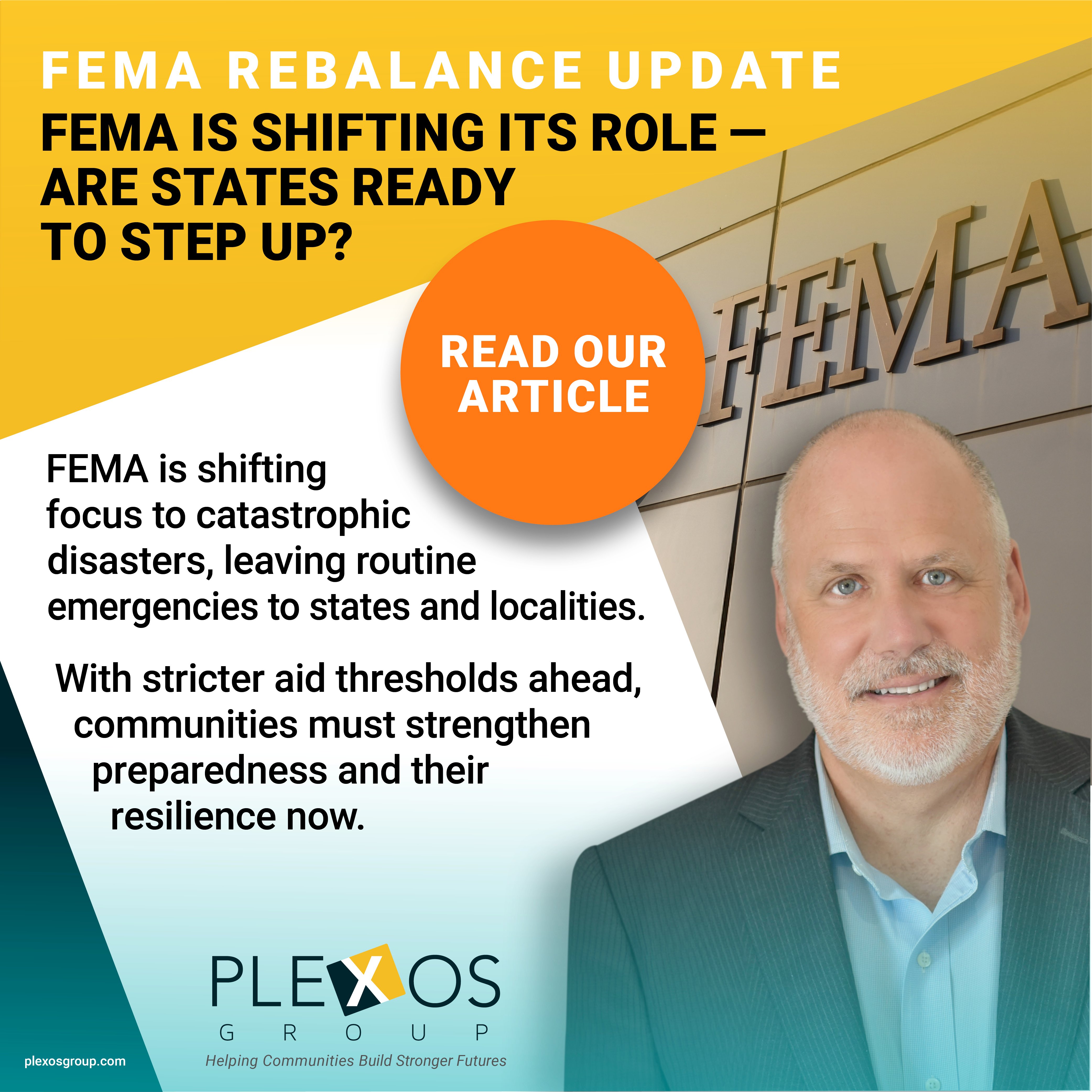1 min read
FEMA’s Strategic Rebalance and What It Means for Communities
Plexos Group
May 23, 2025 12:31:18 PM

FEMA I COMMENTARY
On April 23, 2025 FEMA released a memo to the Office of Management and Budget (OMB) proposing a fundamental shift that rebalances FEMA’s responsibilities in how the agency handles disaster response in the U.S., serving as a redefinition of federal, state, and local responsibilities.
A Shift in Federal Obligation
At the core of the rebalance is FEMA’s move away from being the default responder for every disaster-related event. The federal government will concentrate on catastrophic disasters, while states, tribes, territories, and localities (SLTTs) will be expected to manage more routine emergencies.
This realignment will reduce federal obligations in smaller disasters and reassign operational responsibility to SLTTs, many of which already face capacity and funding constraints.
Rather than managing thousands of claims and reimbursements, FEMA will focus on Catastrophic Risk Planning; Policy Development; and Technical Assistance and Capacity Building. The approach could streamline federal disaster spending, while placing greater demands on state-led disaster recovery frameworks which vary significantly based on individual state capacities.
Adjusted Funding Thresholds & Risk Inequities
FEMA will now apply stricter minimum damage thresholds—based on per capita and total dollar loss—before approving federal disaster declarations. This means fewer incidents will qualify for FEMA aid, placing increased pressure on local preparedness, insurance uptake, and mitigation planning. For communities, especially those with fewer resources, this means disaster planning is imperative to reduce the likelihood of grave outcomes.
The Department of Homeland Security and OMB have pledged to build the tools and training programs needed to operate in vulnerable regions and in many ways, to prevent long recoveries by equipping disaster-prone communities with the resources they need to plan ahead and prevent such outcomes .
What Comes Next?
The shift to FEMA’s more strategic role in today’s increasingly high-risk landscape will occur in phases over several years, with FEMA engaging SLTTs to shape their roles in recovery implementation. What remains to be seen is whether states will be equipped and willing to fill the operational gap that exists in current disaster relief frameworks, and whether FEMA’s rebalanced role will help improve SLTT inequities.
About Paul Rainwater
 Paul Rainwater, was chief of staff for Gov. Bobby Jindal and helped Gov. John Bel Edwardsdevelop an appropriations strategy for federal response and long-term recovery plans after the historic floods of 2016. Ramsey Green, the former infrastructure chief for New Orleans, also contributed to this piece.
Paul Rainwater, was chief of staff for Gov. Bobby Jindal and helped Gov. John Bel Edwardsdevelop an appropriations strategy for federal response and long-term recovery plans after the historic floods of 2016. Ramsey Green, the former infrastructure chief for New Orleans, also contributed to this piece.
Contact Us to learn more about how we can help your organization maximize federal funding programs, limit risk, maintain compliance with federal laws, and leverage Projexis™ technology to expedite your next project.





-1.jpg?width=450&name=1600%20x%20900%20-%20Plexos%20(13)-1.jpg)
